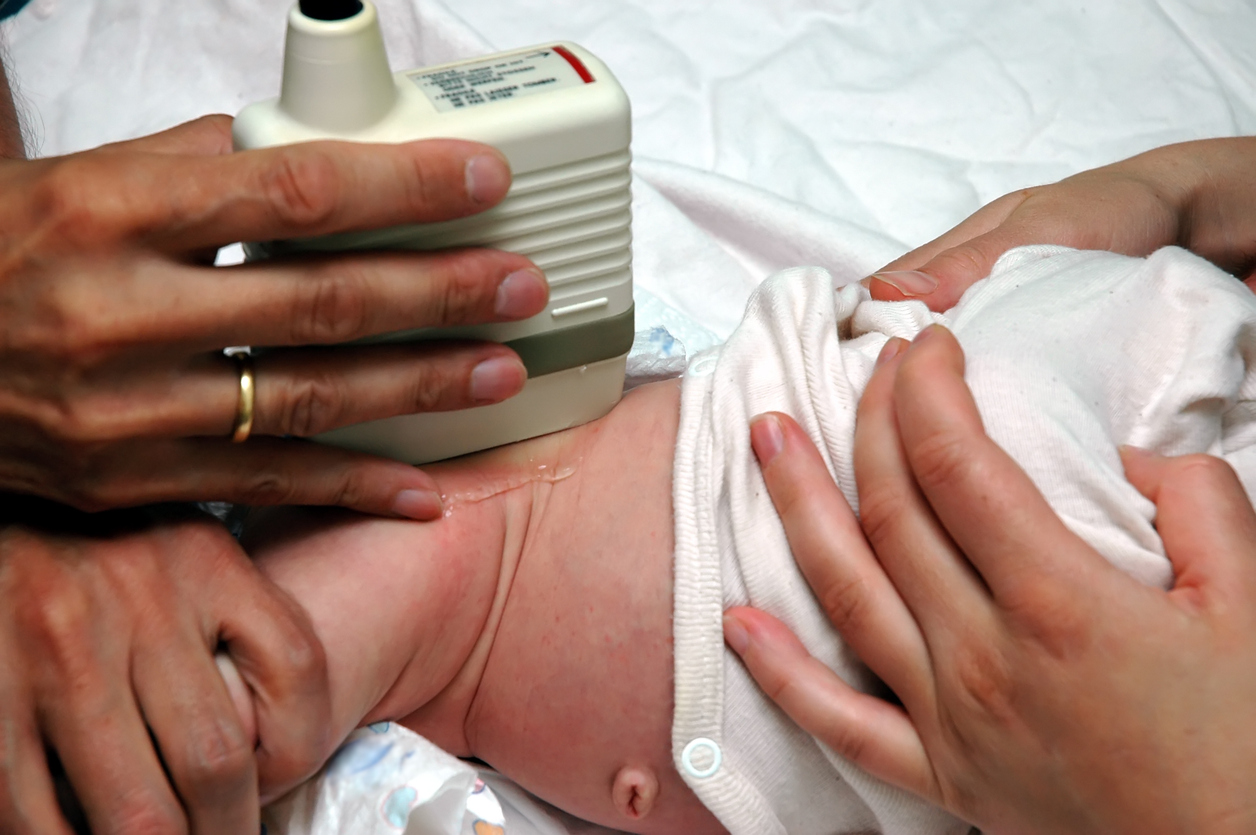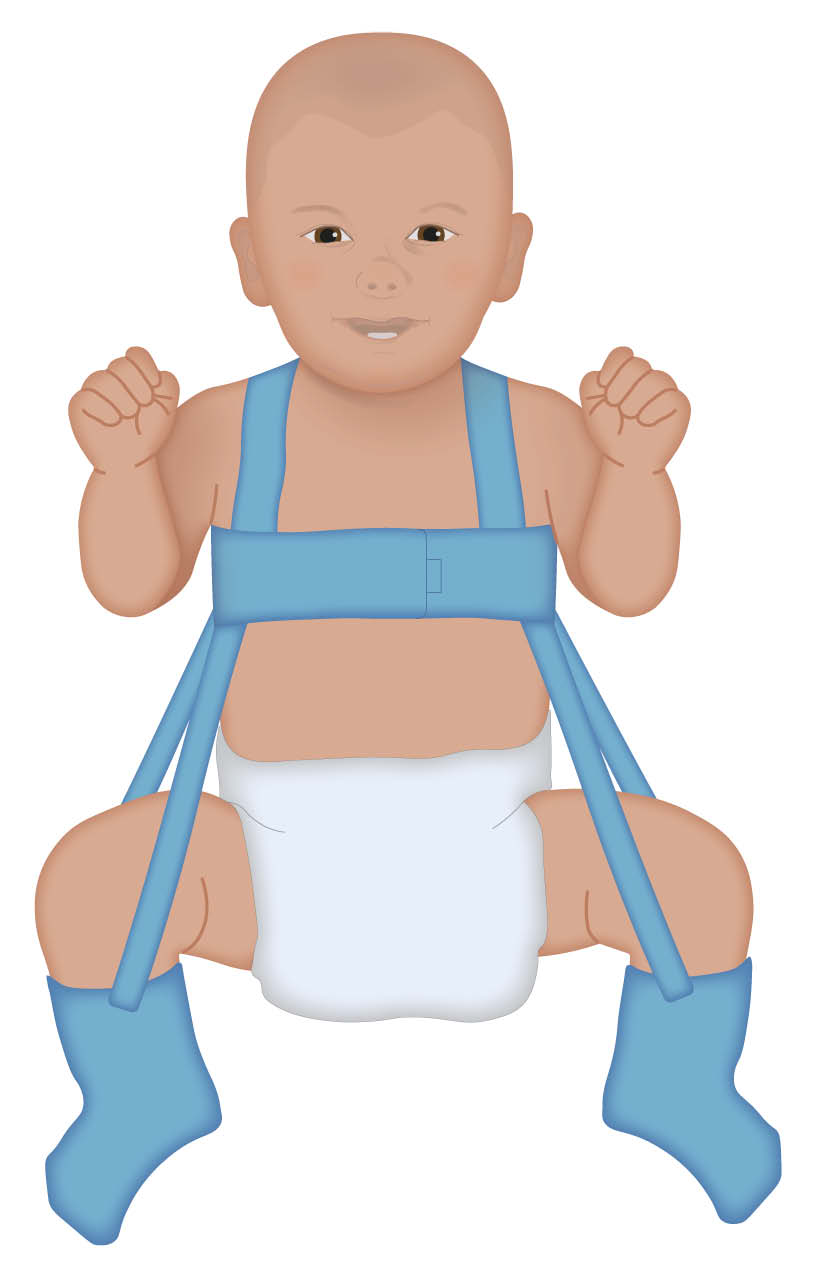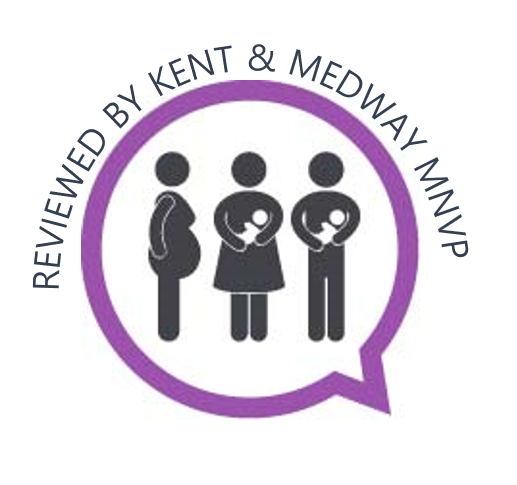Your baby's visit for a hip ultrasound scan
Information for women, birthing people, and their families
A healthcare professional has referred your baby for a hip ultrasound scan. This leaflet will explain the following.
What an ultrasound is, and what it shows.
Why the appointment is important.
What to expect during the scan.
Why it is best to bring your baby.
We hope this leaflet answers some of the questions you may have. If you have any further questions or concerns, please speak to a member of your healthcare team.
What is an ultrasound scan?
Ultrasound scans use sound waves to build a picture of what is happening inside the body. They are important to assist with screening. Ultrasound scans are commonly used in pregnancy.
The sonographer (person performing the scan) will place some gel on your baby’s hips. They will then pass a probe over the gel; an image will then appear on the screen. Ultrasound scans are painless. They have no known side effects. Please talk to your healthcare professional about any concerns you may have.
What does a hip ultrasound show?
A hip ultrasound scan will show if your baby’s hips are developing as they should. In some babies, the ball of the hip may not sit within the joint, or there may be differences in the depth of the socket. We call this developmental dysplasia of the hip (DDH). The severity of this condition may vary from baby to baby.
Why does my baby need a hip ultrasound scan?
A healthcare professional has referred your baby for assessment because of:
an unusual finding at the Newborn Infant Physical Examination (NIPE). This is the newborn examination that was performed shortly after your baby was born; or
they may have one or more of the following reasons (risk factors) that show your baby may be more at risk of having DDH.
Baby was in the breech presentation (bottom down) at or after 36 weeks of pregnancy.
Baby was born in the breech position after 28 weeks of pregnancy.
Baby is from a multiple pregnancy (for example twins or triplets), and one of the babies had any of the above risk factors.
Baby is female and was born weighing 4kg or more.
The team found that baby’s feet and legs showed some differences linked to DDH.
A parent or sibling had treatment for DDH in the past. This means there is a significant family history.
Being invited for this scan does not mean your baby has DDH. Having the scan is the 'best' way of confirming one way or another.
What will happen at our appointment?

At your appointment, the specialist will ask you some questions about your baby. Then, they will perform the ultrasound scan. The scan will not hurt or harm your baby. It will help to dress your baby in clothing that can easily be removed. They will need to be undressed for the scan, but their nappy will remain on. The sonographer will open each side of the nappy in turn as they perform the scan.
Your baby will lie on the scanning table, they can be awake or asleep. It may help if you feed your baby before their scan. This may make them more settled, however it is not necessary. You will be close to your baby during their scan, so you can settle them.
The results of the scan will be discussed with you after your baby’s scan appointment.
What will happen after your appointment?
If the results show your baby’s hips are growing as expected, you will not need any more appointments.
If the results are uncertain, we will arrange another scan for 2 to 4 weeks after the first scan.
If the results suggest your baby may have signs of DDH, your baby will be referred to the Paediatric Orthopaedic Service for assessment.
What is the treatment for DDH?

A member of the Paediatric Orthopaedic Service will discuss treatment options with you if needed.
Treatment for DDH often means using a soft splint called a Pavlik Harness. This harness helps keep your baby’s hips and knees in the right position. You will be shown how to care for your baby whilst it is in the harness. If you have any questions, please speak to the healthcare professional looking after your baby.
Why is it important to bring my baby for the hip ultrasound scan?
It is important that your baby receives their hip ultrasound scan before six weeks of age. If your baby needs treatment, the earlier it starts, the more successful the treatment will be.
If not treated early, DDH can cause problems with movement, such as limping. It may also lead to pain and stiffness in the hip and back, increasing the risk of osteoarthritis.
When will my baby have their scan?
The hospital will invite your baby for an ultrasound hip scan before they reach six weeks of age. For babies born early (before 34 weeks), we will plan this within two weeks of your pregnancy due date. Our team will contact you by letter and / or telephone to arrange the scan appointment.
Where will my baby have their scan?
A healthcare professional will perform the hip ultrasound scan at:
Infant Hip Screening Clinic
Children’s Assessment Centre
Kent and Canterbury Hospital
Ethelbert Road
Canterbury
Kent CT1 3NG
If you cannot make your appointment or have questions about the hip scan, please call us.
Scan Booking Team
Telephone:01227 864249 (option 4)Antenatal and Newborn Screening Team
Telephone: 01227 868720
Further information

This leaflet has been produced by the Antenatal and Newborn Screening Team and the Paediatric Orthopaedic Service. More information can be found below:
Ask 3 Questions
There may be choices to make about your healthcare. Before making any decisions, make sure you get the answers to these three questions:
What are my choices?
What is good and bad about each choice?
How do I get support to help me make a decision that is right for me?
Your healthcare team needs you to tell them what is important to you. It’s all about shared decision making.
What do you think of this leaflet?
We welcome feedback, whether positive or negative, as it helps us to improve our care and services.
If you would like to give us feedback about this leaflet, please fill in our short online survey. Either scan the QR code below, or use the web link. We do not record your personal information, unless you provide contact details and would like to talk to us some more.
If you would rather talk to someone instead of filling in a survey, please call the Patient Voice Team.
Patient Voice Team
Telephone: 01227 868605
Email